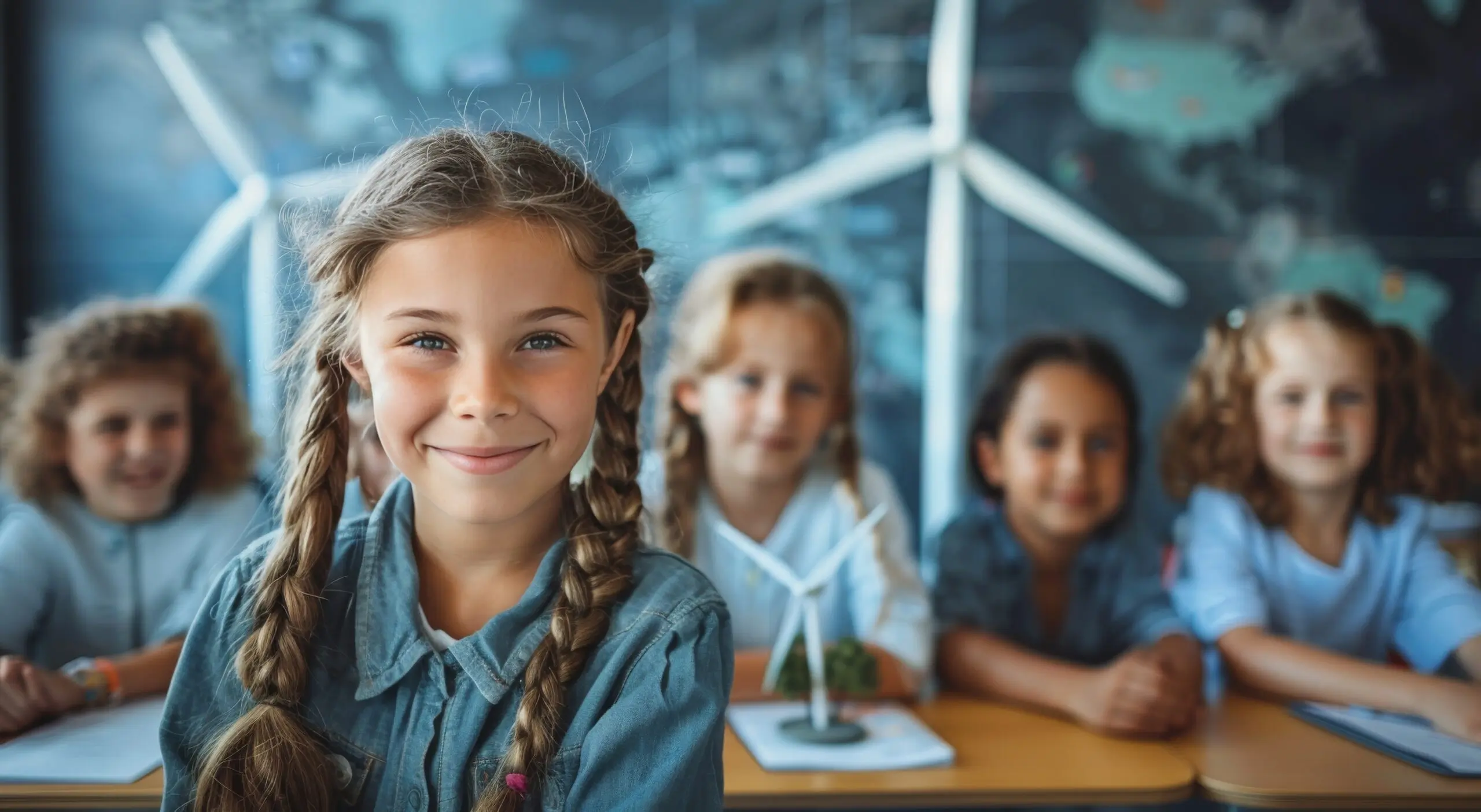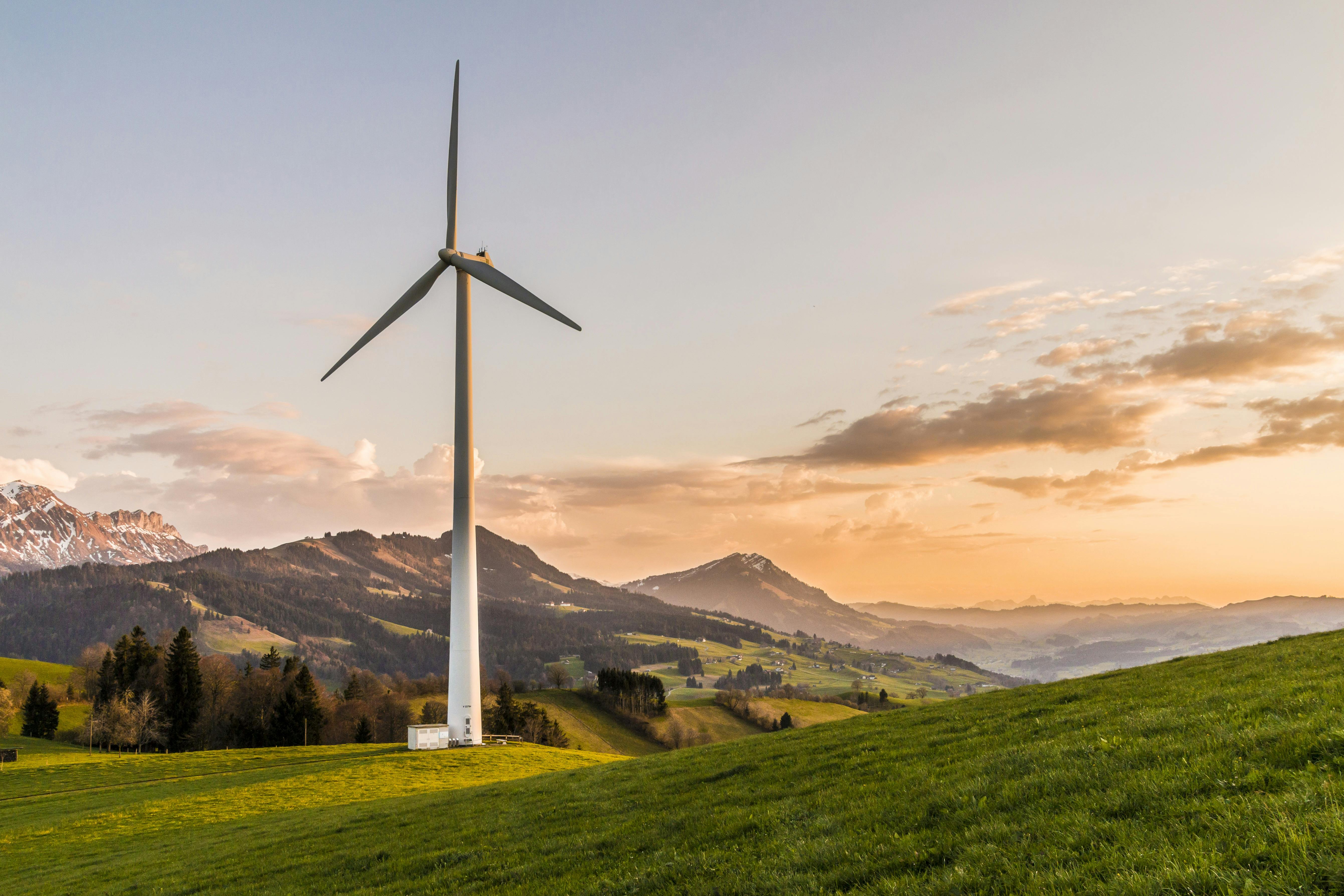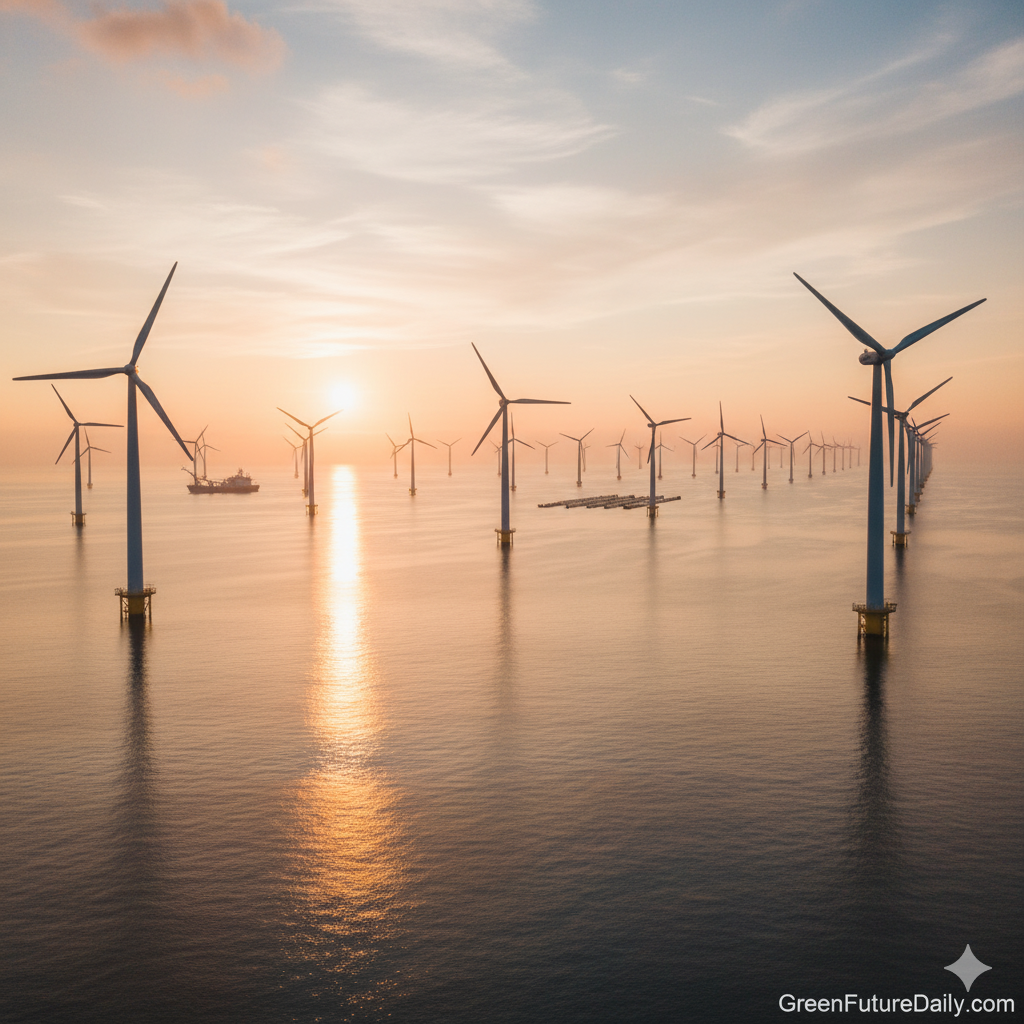
Key Highlights
- The Department of Energy has announced the winners of the 2025 Clean Energy Education Awards, celebrating exceptional individuals and institutions shaping the future of clean energy education.
- The awardees represent diverse fields, including innovative teaching methods, technological advancements, and successful clean energy projects in education.
- This year’s honorees demonstrate a commitment to equity and accessibility in clean energy education, ensuring a just transition for all.
- Cutting-edge technologies and resources are being implemented by awardees to equip students with skills for the evolving clean energy workforce.
- The awards highlight the significance of fostering a passion for clean energy among the next generation of leaders and innovators.
Introduction
In a world that needs sustainable solutions, clean energy education shines as a light of hope. The 2025 Clean Energy Education Awards honor the leaders and thinkers that drive us to a future using renewable energy. These individuals are dedicated to education and new ideas. They are guiding us toward an easy and fair energy change, making sure we have a brighter and more sustainable future for years to come.
Overview of the 2025 Clean Energy Education Awards
The 2025 Clean Energy Education Awards are an important event that highlights how crucial education is in the fight against climate change. These awards honor the great work of people and organizations that help create the next group of leaders and supporters in clean energy.
The winners come from different fields and offer different ways to teach clean energy. They use new teaching methods to get students involved. They also create new technologies to improve energy education programs. These leaders are changing how education works in this area.
Objectives and Significance
The 2025 Clean Energy Education Awards have clear goals that show their importance in advancing clean energy. These awards focus on recognizing and celebrating great achievements in clean energy education. They highlight outstanding teachers, innovative programs, and successful initiatives. By sharing these success stories, the awards encourage others to begin their own journeys in clean energy education. This helps build a culture of innovation and progress.
The awards also aim to promote best practices in energy efficiency education. They showcase techniques and technologies that help conserve energy and protect the environment. The potential energy of a well-trained workforce is significant. Therefore, the awards inspire the creation of programs that provide people with the knowledge and skills needed to succeed in the growing clean energy field.
Lastly, the 2025 Clean Energy Education Awards bring together educators, policymakers, industry experts, and government agencies. This teamwork encourages sharing knowledge and working together. This spirit of collaboration helps speed up the move towards a clean energy future.
Overview of Awardees and Their Contributions
The 2025 group of Clean Energy Education awardees is made up of amazing people and institutions. They are making important progress in their fields. These pioneers are committed to promoting clean energy education. They also have new ideas to fight the climate crisis.
Some awardees are teachers who have turned their classrooms into places of innovation. They inspire students to learn about renewable energy and to follow sustainable practices. Others have received awards for their valuable research, which is shaping the future of clean energy technologies.
The awards also honor the success of women in clean energy. They are recognized for their important roles as leaders, mentors, and role models. They open doors for more diversity and inclusion in this area. The stories of these awardees remind us how education can change lives and how people can make the world a better, more sustainable place.
Highlighting Key Innovations in Clean Energy Education

This year’s awards highlight new ideas that are changing how we learn about and teach clean energy. We see exciting virtual reality experiences that mimic complex energy systems. There are also hands-on projects that let students design and create their own renewable energy solutions. Creativity is flourishing in this area.
The people who won are examples that clean energy education goes beyond just textbooks and lectures. They are creating lively and engaging learning spaces. These places help students take part in building a sustainable future. They gain the knowledge, skills, and drive necessary to make a real difference.
Innovative Teaching Methods Introduced by Awardees
A key point this year is the focus on helping students get involved through new ways of teaching. Many teachers see that regular classroom lectures may not fully engage students in clean energy topics. Because of this, they have started using creative methods to spark interest and help students understand better.
Here are some examples:
- Project-based Learning: Teachers are adding hands-on projects to their classes. This allows students to create, build, and test their solutions for clean energy, like solar-powered devices or small wind turbines.
- Gamification and Simulations: By using games and simulations, teachers make learning about energy systems, like the grid, fun and interactive.
- Community Partnerships: Many teachers build connections with local businesses and groups in clean energy. They know it’s important to link what students learn in class to the real world.
These new methods not only boost student engagement and learning but also help create a skilled technical workforce ready to work in the growing clean energy field.
Impact of These Innovations on Clean Energy Awareness
The impact of new teaching methods goes beyond just better grades. These methods help students relate clean energy ideas to their everyday lives. This approach helps students understand how important the clean energy transition is for a sustainable future.
When students join these programs, they learn how energy use and energy transformations connect with the environment. This awareness makes them feel responsible and encourages them to promote sustainable habits at home, in school, and in their communities.
In the end, these teaching methods are creating a generation that knows a lot about clean energy and wants to make a difference. This change is making communities more aware of energy issues and more involved in supporting the clean energy transition.
Profiles of Award-Winning Educators and Institutions
The 2025 Clean Energy Education Awards honor different people and schools that are leading the way in learning and working with clean energy. These inspiring individuals are experienced teachers who have spent their careers helping students learn about the energy field. They equip students with the knowledge and skills they need. We also see institutions that are creating new clean energy technologies through their research and development.
Their stories show their strong dedication, creativity, and love for creating a better future.
Success Stories from the Field
Dr. Sarah Chen is this year’s award winner. She shows how important dedicated teachers can be. With more than 20 years of experience in teaching environmental science, Dr. Chen changed her high school curriculum. She added hands-on projects about renewable energy. Her students were inspired by her passion and creative teaching. They worked together to convince their school board to put solar panels on their school’s roof. This reduced their carbon footprint and motivated other schools in the area to do the same.
Another award winner is the Center for Sustainable Energy Solutions (CSES). They show the power of strong leadership in institutions. With help from grants by the National Science Foundation, CSES created a full clean energy curriculum for K-12 schools. They train teachers and give them the tools to teach fun and effective lessons.
These success stories show how dedicated teachers and forward-looking organizations are making a real difference in clean energy education. They inspire the next generation of leaders.
How These Educators Are Shaping the Future of Clean Energy
Teachers are giving students a strong grasp of clean energy technologies. This helps create a new generation ready to lead us toward a better, sustainable energy future. Graduates from these programs often choose jobs in areas like renewable energy engineering, sustainable design, energy policy, and environmental advocacy. They help drive innovation across many industries.
Also, teachers are important in changing how people see and understand clean energy. By explaining difficult ideas and clearing up common misunderstandings, they build support for laws and actions that help use clean energy more.
Groups like the DOE understand how important education is for making clean energy work. Their support for educational programs keeps the workforce ready to create, build, and manage complex systems, like the grid, that we need for a clean energy future.
The Role of Technology in Advancing Clean Energy Education

In today’s world full of technology, it helps a lot in teaching clean energy. It makes tough ideas easier to understand and more fun for all students. For example, there are interactive software programs that can show real energy situations. This way, students can try out different clean energy technologies and see how they work for themselves.
By using these modern tools in teaching, educators are helping students learn about clean energy better. They are also giving them important digital skills that they will need in the fast-changing energy field.
Technological Tools and Resources Used by Awardees
The 2025 award recipients are embracing a wide range of technological tools and resources to create dynamic and engaging learning environments. Their innovative approaches leverage the power of technology to bring clean energy concepts to life, helping students develop a deeper understanding of complex systems and inspire them to pursue careers in the field.
Here are a few examples of these tools:
| Tool/Resource | Description |
| Energy Simulation Software (e.g., Energy3D, HOMER Pro) | Allows students to design and model clean energy systems, such as solar panels on buildings or wind farms, and analyze their performance under various conditions. |
| Virtual Reality (VR) and Augmented Reality (AR) Applications | Provide immersive experiences that enable students to explore clean energy facilities, such as solar farms or electric vehicle manufacturing plants, in a virtual environment. |
| Online Learning Platforms and Resources (e.g., Coursera, edX, NREL Resources) | Offer a wealth of courses, tutorials, and interactive modules on various aspects of clean energy, from the science behind renewable energy sources to the economics of clean energy deployment. |
By incorporating these tools into their curriculum, clean energy educators are ensuring that students are well-equipped with the knowledge and skills to succeed in the 21st-century workforce.
Future Trends in Clean Energy Education Technology
Looking ahead, some new trends in educational technology are ready to change clean energy education. This will make learning more interactive, personal, and engaging. It will help meet the different needs of students and get them ready for the changing energy field.
One important trend is the rise of artificial intelligence (AI) in education. AI platforms can give students personal feedback. They can also change based on how a student learns and suggest resources that fit their needs. Plus, AI can look at large amounts of energy data. This helps students understand the complex links between different forms of energy and make smart choices.
As technology keeps moving forward, we will likely see more new ways to teach clean energy education. These new tools will keep changing how we learn and teach about clean energy. They will help create a more sustainable future for everyone.
Conclusion
The 2025 Clean Energy Education Awardees show a strong commitment to promoting sustainable practices in education. Their creative teaching and use of technology are helping to raise awareness about clean energy. These teachers and schools inspire others and make real change with their focus on clean energy. The success stories from their work show how education can lead to a greener future. If you want to know more about clean energy education, looking into what these awardees are doing will help you learn about caring for the environment. Let’s celebrate their great work and help create a more sustainable future.
Frequently Asked Questions
What criteria are used to select awardees?
Awardees are chosen for their outstanding work in clean energy education. This is shown by their creative teaching methods and the creation of effective energy education programs. They also show a strong commitment to student engagement and work together with government agencies and other groups.
How can educators apply for the next cycle of awards?
You can find details about the next award cycle on the Office of Energy Efficiency and Renewable Energy website. This includes who can apply and how to do so. The awards will celebrate years of experience, great leadership, and the success of women as well as a skilled technical workforce.
What resources are available for those interested in clean energy education?
Many resources are out there. You can find educational materials from the National Science Foundation, the Department of Energy (DOE), and the National Renewable Energy Laboratory (NREL). These institutions share a lot of information on clean energy technologies, the grid, and other topics.
Can students initiate clean energy projects in their schools?
Sure! Students can support clean energy efforts in several ways. They can start green clubs to raise awareness. They can also do energy audits to check how much energy is used and find ways to improve. Additionally, they can suggest projects, such as putting up solar panels or using energy-saving methods.
What impact have past awardees had on clean energy advocacy?
Past award winners have become important supporters. They promote policies that help clean energy, energy efficiency, and electric vehicles. Their efforts have raised awareness about how important it is to move towards clean energy.


